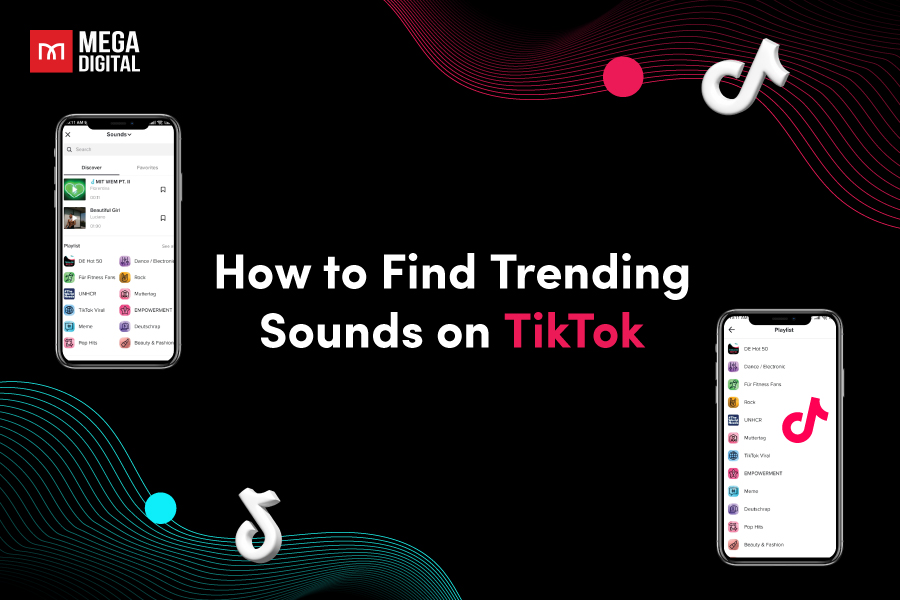Why are their ads winning while yours get skipped? It’s not luck. With PPC competitor analysis, you’ll uncover what’s working for others and ways to optimize your own ad campaign for better results. This detailed guide from Mega Digital will show you how to turn competitors’ insights into a smarter PPC strategy! Let’s get started!
- What Is PPC Competitor Analysis?
- Why Is PPC Competitor Analysis So Important?
- Step-by-Step Guide for PPC Competitor Analysis
- Effective PPC Competitive Analysis Tools to Spy on the Competition
- How to Turn Competitor Insights into PPC Wins
- Common Mistakes to Avoid in PPC Competitive Analysis
- Competitor Research Ultimate Checklist
What Is PPC Competitor Analysis?
PPC competitor analysis is the process of researching and evaluating your competitors’ pay-per-click ad strategies to draw useful insights for your campaigns.
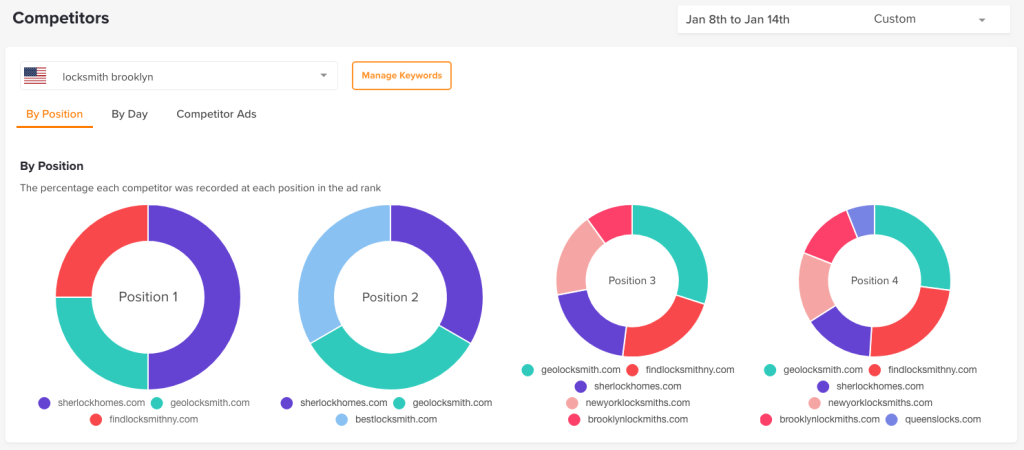
This analysis gives you a clearer picture of the PPC landscape. You’re not just guessing what your audience responds to. Instead, you can learn directly from what your competitors are already putting in front of them.
Thus, PPC competitor analysis helps you make smarter, faster decisions without starting from scratch.
Why Is PPC Competitor Analysis So Important?
PPC competitor analysis plays a key role in helping advertisers make smarter, more informed decisions, especially in highly competitive industries. Here are two key reasons why it matters:
1. Craft Stronger Ads And Landing Pages
Analyzing competitor ads and landing pages helps you spot gaps, not just get ideas. You’ll see how others position offers, use emotional triggers, and guide users to act.
If high-budget competitors have weak landing experiences, for example, that’s your chance to outperform them with clearer, faster, more effective pages.

2. Discover Hidden Opportunities
PPC competitive analysis can reveal gaps you’d likely miss from inside your own account – like underused keywords, overlooked time slots, or weak ad angles. Spotting these blind spots lets you capture cheaper clicks, test new offers, and react faster than your rivals.
Step-by-Step Guide for PPC Competitor Analysis
PPC competitor research is all about learning. Follow these steps to break down your competitors’ strategies and find actionable ways to optimize your own campaigns!
1. Identify Your Main Competitors
Start by figuring out who your real PPC competitors are. These typically fall into 2 categories:
- Direct competitors: These are businesses offering the same service to the same target audience. For example, if you’re advertising a personal loan service, your direct competitors would be other lenders.
- Indirect competitors: These are companies offering different solutions that still target the same search intent. Your indirect competitors are now credit card providers promoting balance transfers or financial apps helping users manage debt.
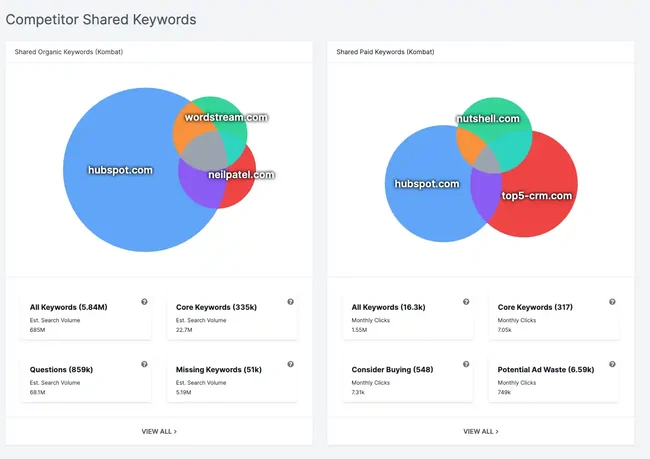
A quick way to identify both is by searching your core keywords on Google or Facebook and seeing who consistently appears in paid results. Those are the brands worth analyzing.
2. Analyze Keyword Strategies and Gaps
Next, check out the most valuable paid keywords your competitors are targeting using tools like SEMrush or Ahrefs.
And don’t just look for what they’re bidding on. Look for patterns in their keyword choices that indicate buyer intent or seasonal pushes.
More importantly, search for gaps: high-intent keywords they’re not consistently targeting or terms with lower competition but strong conversion potential. These represent opportunities for you to get visibility where others aren’t looking.
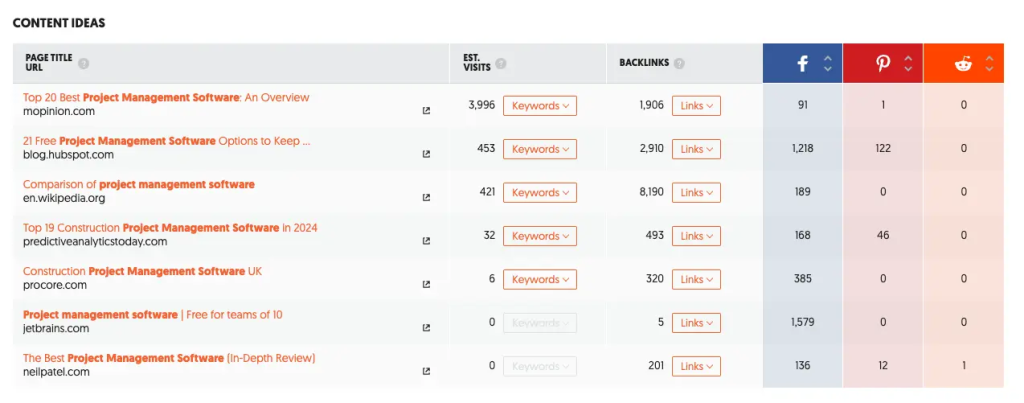
>>> Read more: PPC Keyword Research: A Step-by-Step Guide For More Traffic
3. Study Competitor Bidding Patterns
Bidding behavior reveals how aggressive your competitors are and which campaigns they value most. Use Google Ads Auction Insights to compare:
- Impression share: the percentage of total impressions your ad received vs. what was available
- Top-of-page rate: how often a competitor ad appears at the top of search results
- Overlap rate: how frequently your ad and a competitor’s ad appear in the same auction
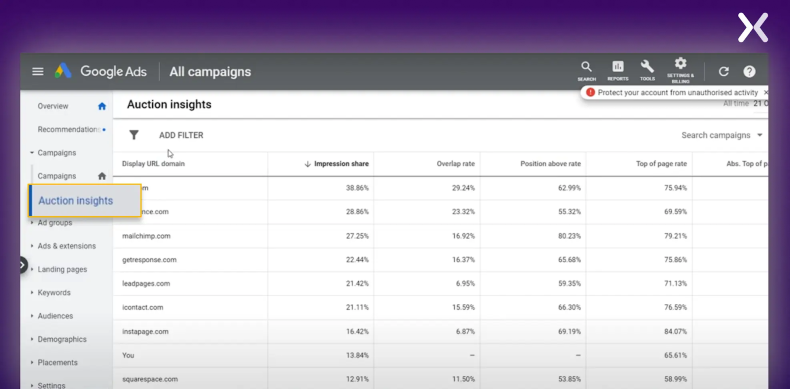
For example, if you sell skincare products and notice a competitor suddenly gaining more top-of-page visibility for keywords like “best vitamin C serum”, it could indicate a promotional campaign or seasonal push. Instead of raising your bids reactively, you could shift the budget to related long-tail keywords with lower competition.
4. Review Competitors’ Ad Copy
Ad copy is where brands win attention—or lose it. Analyzing how competitors write their ads helps you understand what messaging connects with your shared audience. Look at:
- Tone: Is it friendly, professional, urgent, or benefit-driven?
- CTAs: What actions are they asking users to take? (“Book a demo,” “Shop now,” etc.)
- Unique offers: Are they highlighting discounts, guarantees, or limited-time deals?
You can explore this easily using the Facebook Ad Library or by searching your keywords and comparing multiple ad variations.
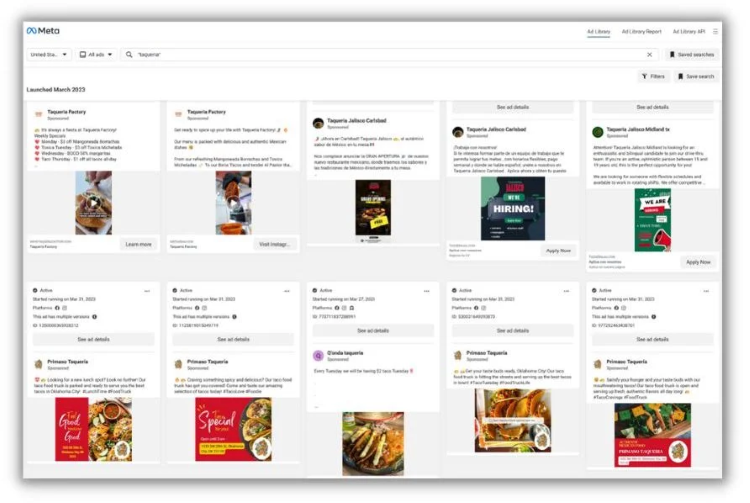
5. Examine Competitor Ad Extensions and Features
Extensions often indicate how much effort a brand is putting into maximizing their ad performance. Look at whether they’re using:
- Sitelinks: Direct users to product pages or contact info
- Callouts: Highlight perks like “Free shipping” or “24/7 support”
- Structured snippets: List services or categories
- Price extensions: Transparency and faster decision-making
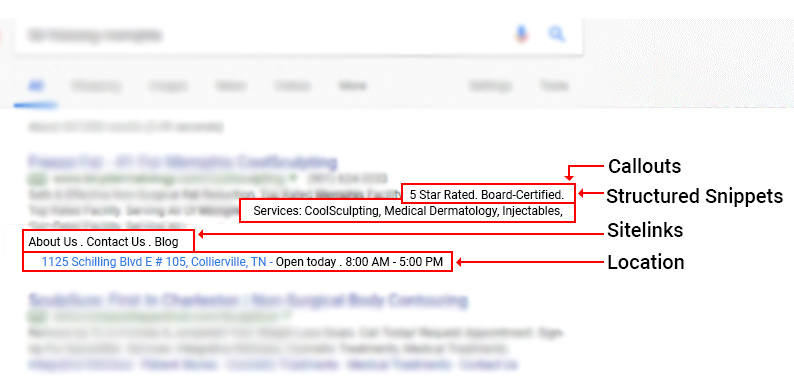
6. Audit Competitor Landing Pages
Clicking through to their landing pages gives you insight into their post-click strategy. Is their message aligned with the ad? Is the CTA visible? Are trust elements like reviews, guarantees, or awards present?
You might notice friction points like slow load times, confusing layouts, or unclear offers. These are opportunities to refine your landing pages for better conversion flow and faster user action.
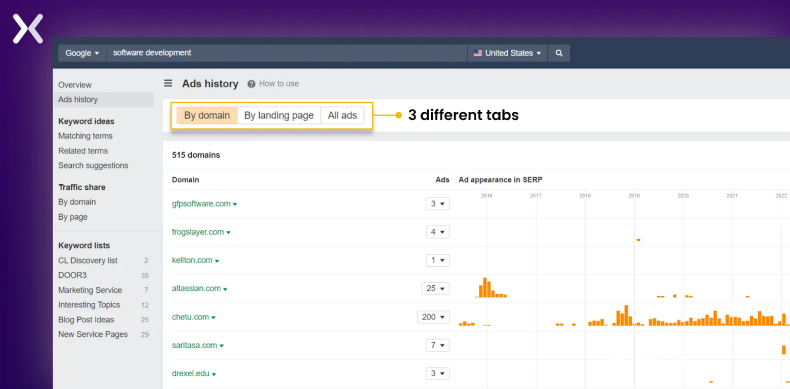
7. Evaluate Audience Targeting
While you can’t see the exact audience settings, you can infer targeting based on ad placements, messaging, and platform choices.
Look for patterns in:
- Platforms used (Search, Display, Social)
- Device emphasis (mobile vs. desktop)
- Remarketing behavior (Do their ads follow you?)
For example, if a competitor runs mobile-first ads on Instagram and TikTok, they’re likely targeting younger, tech-savvy users. Meanwhile, brands focused on LinkedIn often aim at high-intent professionals.
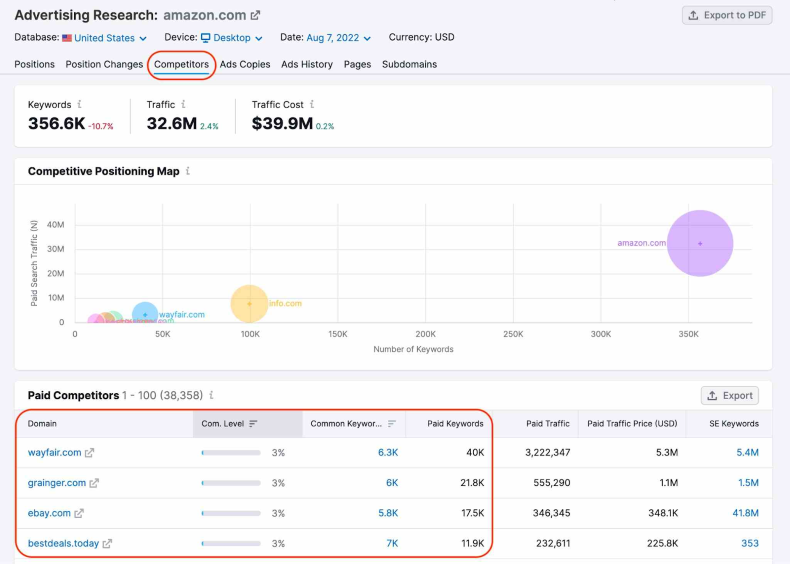
Effective PPC Competitive Analysis Tools to Spy on the Competition
You don’t need to guess what your competitors are doing – you just need the right tools. Here are four powerful options to uncover their strategies and sharpen your own:
1. Auction Insights in Google Ads
Auction Insights is built directly into the Google Ads platform, making it the most immediate way to see how your performance stacks up in shared auctions. This report shows actual auction-level comparisons, such as impression share, top-of-page rate, and position above rate.
What sets it apart is that it reveals who you’re competing with in real time and how often they’re beating you, giving you a tactical edge in bid strategy and budgeting. While it doesn’t show keywords or creatives, it provides unmatched accuracy within the Google ecosystem.
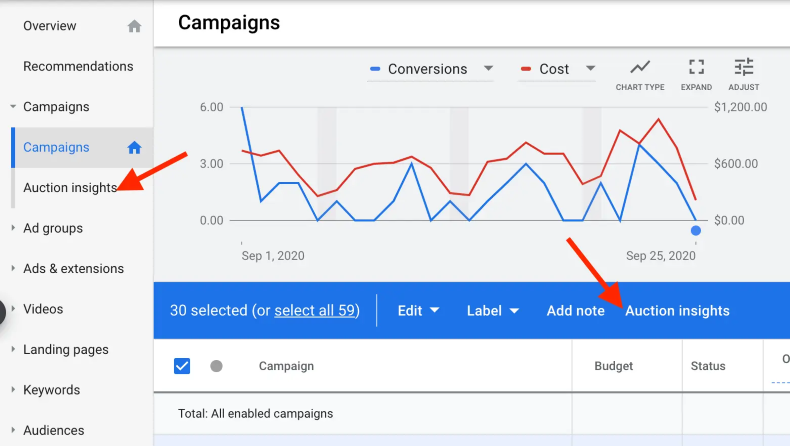
2. Meta Ad Library
Unlike most PPC tools that focus on search, the Meta Ad Library offers full transparency into display creatives on Facebook and Instagram. You can view all active ads run by a competitor, filter by country, and explore variations in design, messaging, and format.
It’s especially useful for identifying trends in visual storytelling, seasonal offers, or audience-targeting strategies.
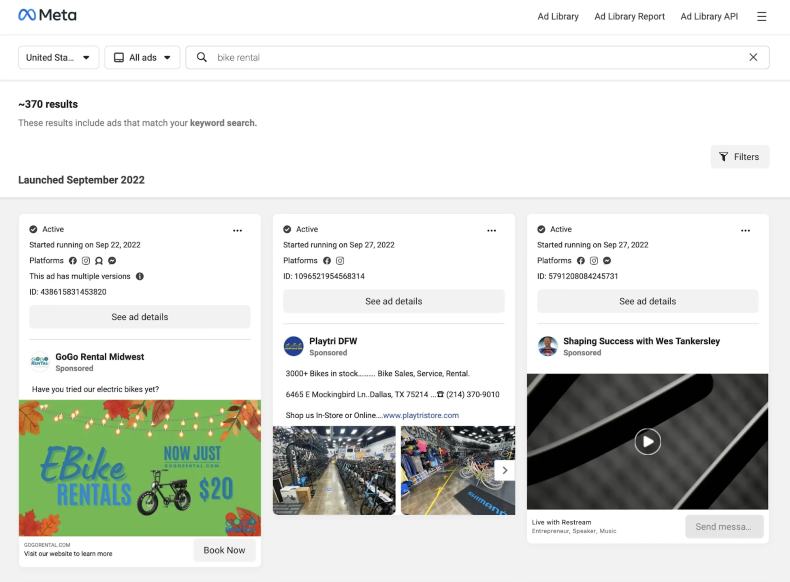
3. Semrush
Semrush offers one of the most well-rounded toolsets for PPC and SEO competitive research. Its strength lies in pulling together paid keyword data, traffic estimates, competitor benchmarking, and even ad copy examples in a single dashboard. This makes it ideal for long-term strategic planning and ongoing performance monitoring beyond just Google Ads.
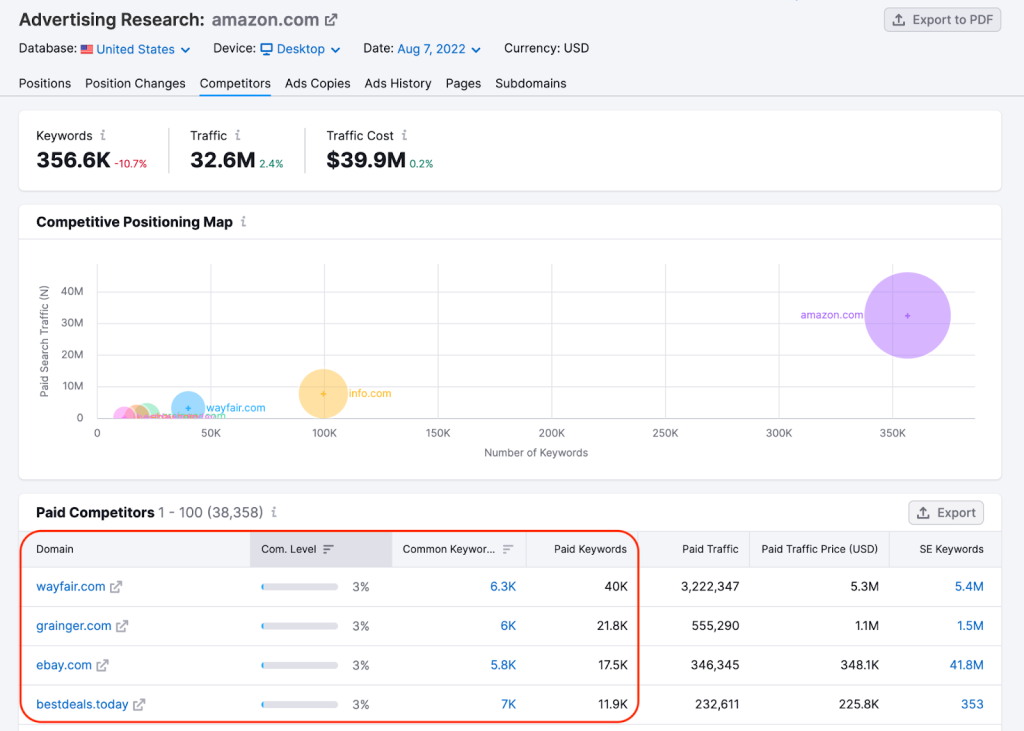
4. Ahrefs
Ahrefs is frequently seen as an SEO-first platform, but its paid keywords reports and ad position history make it highly valuable for PPC.
While Semrush focuses on volume and traffic share, Ahrefs specializes in discovering low-cost keyword opportunities that your competitors may not be regularly bidding on. It proves useful in case you want to reverse engineer certain campaigns and find overlooked entry points.
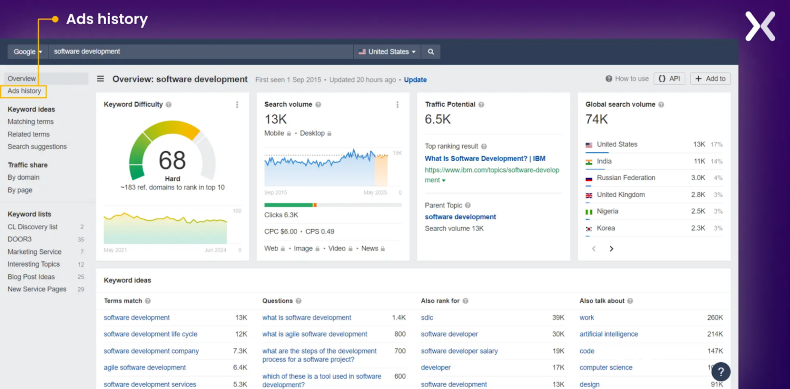
How to Turn Competitor Insights into PPC Wins
Gathering data is only half the battle. What matters is what you do with it. Here’s how to turn PPC competitor research into strategic improvements:
1. Refine Your Keyword Selection
After identifying which keywords your competitors are ranking for or ignoring, revisit your keyword list. Add high-intent terms they’re using successfully and explore long-tail variations they’ve overlooked. This helps you capture both existing demand and hidden opportunities.
Besides, you should prioritize keywords with commercial intent and lower competition to improve cost-efficiency and relevance.
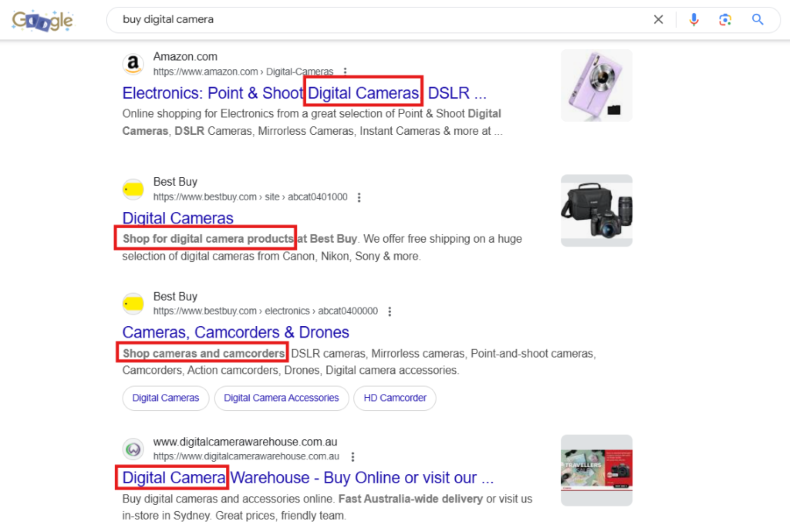
2. Optimize Your Bids for Efficiency
Use tools like Auction Insights or Semrush to understand which competitors are consistently outranking you and why.
If a competitor is dominating top positions, don’t increase your bids. Instead, assess whether they’re winning due to higher Quality Scores or simply because of seasonal promotion. Use these insights to adjust your bidding strategy by improving ad rank rather than simply spending more.
3. Improve The Ad Copy
Reviewing your competitors’ messaging helps you identify patterns: what hooks they use, which benefits they highlight, and what offers they lead with. If their ads consistently use trust signals like “500+ 5-star reviews,” for example, test variations of those elements in your copy. Focus on clarity, differentiation, and matching your ad messaging closely with user intent.
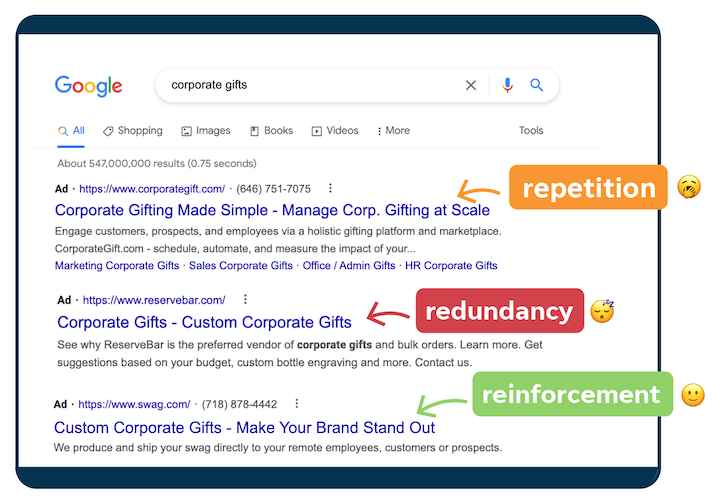
4. Update Campaign Targeting
If your competitor is gaining traction on placements you haven’t prioritized, it might be time to revisit your targeting strategy.
Are they speaking to a younger demographic via Instagram Stories? Are they dominating local searches you’ve ignored? Use these patterns to experiment with new audiences, adjust location targeting, or expand into additional channels that better align with your goals.
>>> Read more: Top 15 PPC Optimization Strategies to Improve Ad Results
Common Mistakes to Avoid in PPC Competitive Analysis
Paid search competitor analysis can give you a clear edge, but only if done right. These common mistakes often lead to poor decisions, wasted budget, or missed opportunities. Below is what to watch out for:
1. Overreacting to Short-Term Competitor Moves
It’s tempting to mirror every sudden shift your competitor makes. But not every move is strategic. They could be testing, responding to internal pressure, or even failing.
For example, a spike in bidding for “emergency loans” might be a short-term push that drains their budget without results. Reacting too quickly can throw off your performance. Instead, focus on patterns and sustained trends before adjusting your strategy.
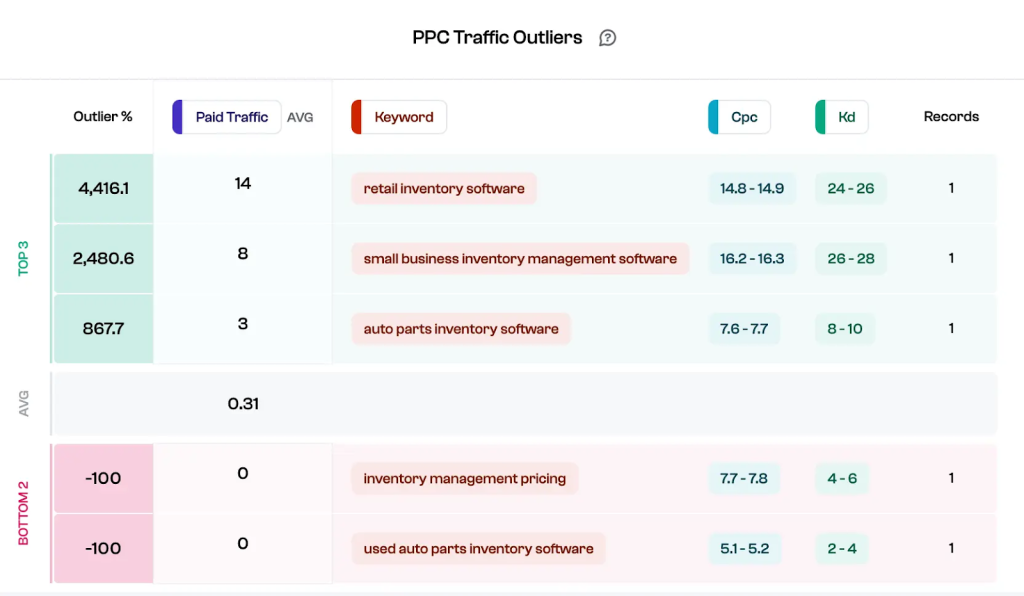
2. Ignoring Indirect Competitors
Many advertisers focus only on direct rivals. But indirect competitors can quietly siphon away clicks.
For instance, a language learning app may compete with productivity tools or online coaching platforms targeting the same “self-improvement” keywords. Ignoring them means missing chances to position your brand more clearly in a crowded intent space.
3. Making Inappropriate Conclusions Without Context
Competitor data is valuable, but only when interpreted in context. A travel agency might see a competitor ranking at the top for “last-minute flights,” but that doesn’t mean the campaign is profitable. Their CPC could be high, or their landing page could underperform.
Thus, use these insights as a starting point, not a signal to blindly follow.

Competitor Research Ultimate Checklist
Ready to put your research into action? Use this checklist to ensure you’re covering every angle of a well-rounded paid search competitive analysis:
| No. | Steps | Activities |
|---|---|---|
| 1 | Identify Your Main Competitors | Identify your direct and indirect PPC competitors Search your main keywords and note which advertisers consistently appear |
| 2 | Analyze Keyword Strategies and Gaps | Look for high-intent keywords they target. Spot valuable ones they miss. |
| 3 | Study Competitor Bidding Patterns | Compare impression share, top-of-page rate, and overlap rate to assess aggressiveness. |
| 4 | Review Competitors’ Ad Copy | Examine how they position their value, structure CTAs, and highlight benefits. |
| 5 | Examine Competitor Ad Extensions and Features | Check if they’re using sitelinks, callouts, structured snippets, or price extensions effectively. |
| 6 | Audit Competitor Landing Pages | Look at UX, load time, message alignment, and trust-building elements. |
| 7 | Evaluate Audience Targeting | Infer who they’re targeting based on devices, channels, and ad messaging. |
Effective PPC competitor analysis gives you more than data – it gives you direction. Use it not just to keep up with your competitors but to outperform them. Start applying these insights today to build smarter, more profitable PPC campaigns!







